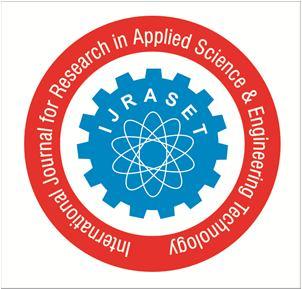
2 minute read
International Journal for Research in Applied Science & Engineering Technology (IJRASET)

ISSN: 2321-9653; IC Value: 45.98; SJ Impact Factor: 7.538
Advertisement
Volume 11 Issue IV Apr 2023- Available at www.ijraset.com
VI. CONCLUSION
In conclusion, the suggested method for multi-disease prediction utilizing Naive Bayes networks has demonstrated promising results in effectively predicting several illnesses using patient symptoms as input data. To determine the likelihood of a disease given a collection of symptoms, the system uses the Naive Bayes method, a probabilistic model that assumes the independence of features. The system demonstrated a high degree of accuracy in predicting different diseases when it was tested using a dataset of patient symptoms and associated diagnoses.
A. Future Enhancement
In the future, this work might be improved by using more modern machine-learning algorithms and techniques, such as deep learning, to increase the prediction models' accuracy and efficiency. Also, expanding the dataset to incorporate more varied patient groups and a larger spectrum of illnesses and symptoms may help shed additional light on the models' efficiency. The technology might be made easier to use in clinical settings by being integrated into an intuitive interface that both patients and healthcare professionals can access. This would eventually improve patient outcomes and increase the effectiveness of healthcare delivery.
References
[1] Sameer Meshram1, Shital Dongre, Triveni Fole. “Disease Prediction System using naïve bayes”. International Journal for Research in Applied Science & Engineering Technology Volume 10 Issue XII Dec 2022.
[2] Abid ishaq, saima sadiq, muhammad umer, saleem ullah, seyedali mirjalili, vaibhav rupapara , and michele nappi. “Improving the Prediction of Heart Failure Patients’ Survival Using SMOTE and Effective Data Mining Techniques”. March 16, 2021.
[3] Bilal khan, Rashid naseem, Fazal muhammad, ghulam abbas, and sung hwan kim. “An Empirical Evaluation of Machine Learning Techniques for Chronic Kidney Disease Prophecy”. March 30, 2020.
[4] Chandrasekhar Rao Jetti, Rehamatulla Shaik, Sadhik Shaik, Sowmya Sanagapalli “Disease Prediction using Naïve Bayes - Machine Learning Algorithm”, December 2021.
[5] Prediction Support System for Multiple Disease Prediction Using Naive Bayes Classifier”. Selvaraj A, Mithra MK, Keerthana S, Deepika M. International Journal of Engineering and Techniques - Volume 4 Issue 2, Mar-Apr 2021.
[6] Akkem Yaganteeswarudu,” Multi Disease Prediction Model by using Machine Learning and Flask API”, IEEE, July 2022.
[7] Yashaswi G Sagar, Sahana Gajanana, Riyal Vivek, Swetha P,” MediInsight: A Smart Health Prediction System”, (IRJET), June 2021
[8] Hsiu-Sen Chiang, Mu-Yen Chen, “Cognitive Depression Detection Cyber-Medical System Based on EEG Analysis and Deep Learning Approaches” IEEE, February 2023.
[9] Wei Shao, Zhiyang You, Lesheng Liang, Xiping Hu, “A Multi-Modal Gait Analysis-Based Detection System of the Risk of Depression” IEEE, October 2022.
[10] Akash C. Jamgade, Prof. S. D. Zade, International Research Journal of Engineering and Technology, May 2019.
[11] Anjan Nikhil Repaka, Sai Deepak Ravikanti, Ramya G Franklin,” Design and Implementing Heart Disease Prediction Using Naïve Bayesian”, IEEE, June 2019.
[12] N. P. Tigga and S. Garg, ‘‘Prediction of type 2 diabetes using machine learning classification methods,’’ Proc. Computer Sci., Jan. 2020.


